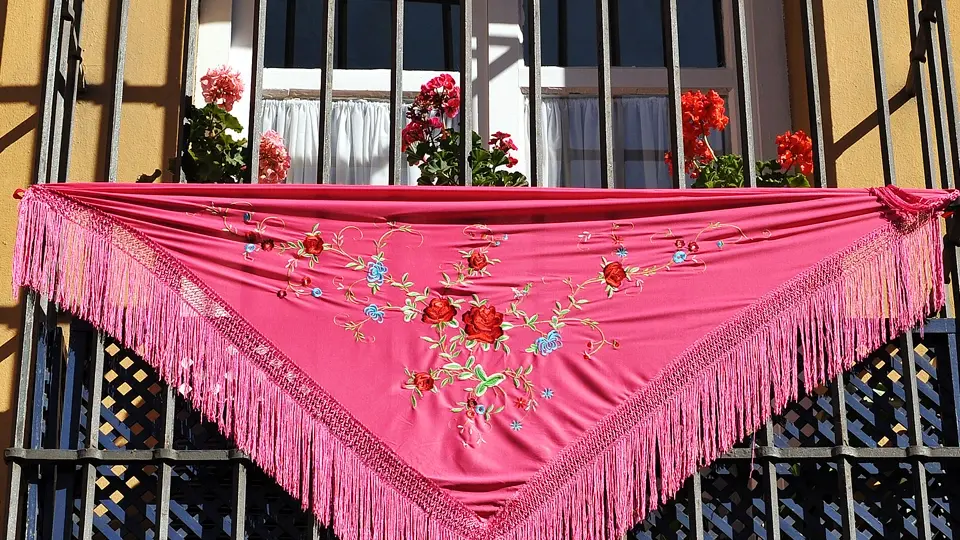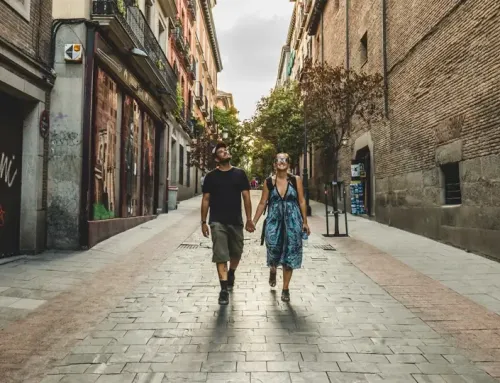The soul of the courtyard, the spirit of the festival: Andalusia’s Cross of May
Before embarking on your adventure through Andalusia’s Cross of May, discover how this ancient tradition blends paganism and Christianity, flourishes from north to south in every province, and has inspired works of cinema, literature, and music. In this post, you’ll find the historical origins of the festival, a province-by-province tour of the different celebrations, artistic references that have immortalized The Cross of May, and finally, we’ll show you how Carameltrail designs the perfect tailor-made trip for you to experience it uniquely.
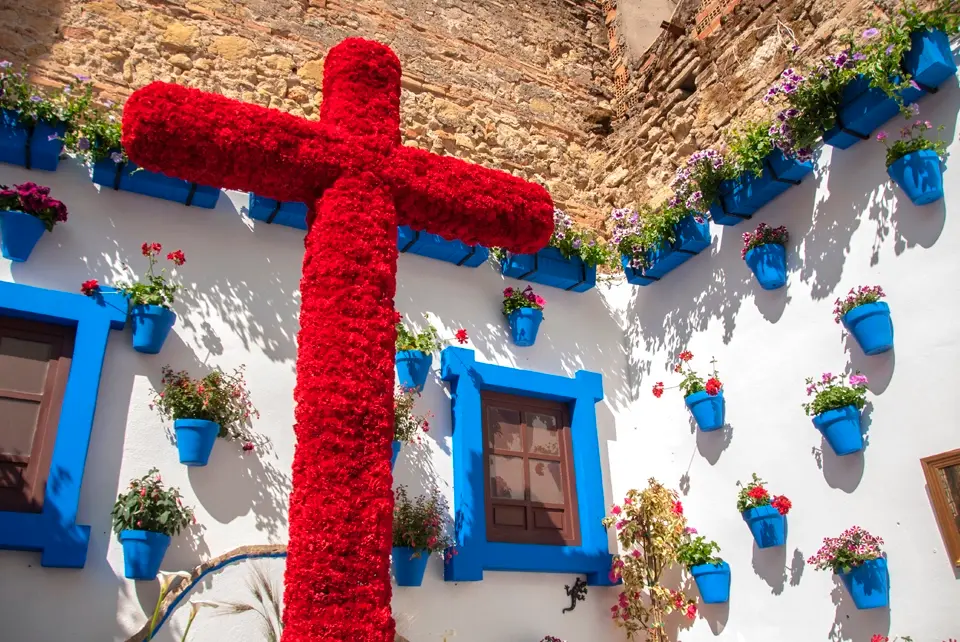
THE ORIGINS OF THE CROSS OF MAY IN ANDALUSIA
The celebration of The Cross of May has its roots in ancient pagan festivities dedicated to the arrival of spring, where the “Maya” was crowned with flowers as a symbol of fertility and the rebirth of nature. Philological and historical studies indicate that in the Middle Ages, crosses were erected to commemorate the victory of Christian troops during the Reconquista, turning the symbol into a reflection of power and faith.
With the Christianization of the festival, May 3 became linked to the discovery of the True Cross by Saint Helena in 324, giving rise to the liturgical feast of the Invention of the Holy Cross, established at least since the 7th century. In the 18th and 19th centuries, the neighborhoods of Albaicín and El Realejo in Granada and the courtyards of Cordoba popularized the custom of erecting floral altars around a cross, giving rise to the modern version of the festival.
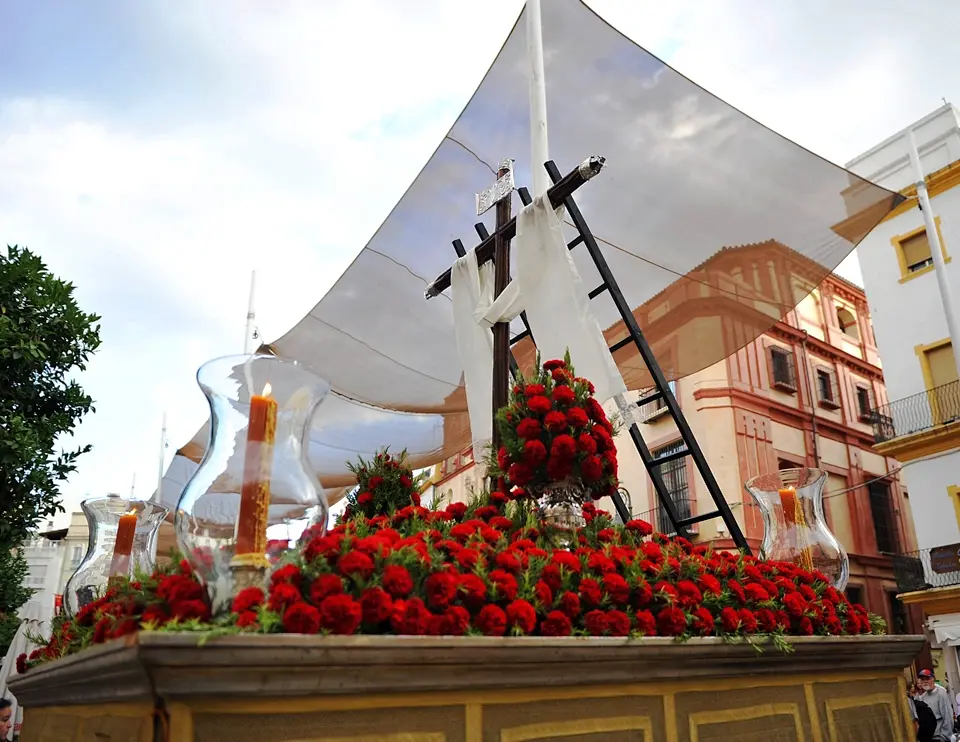
A DISPLAY THROUGHOUT ANDALUSIA
Every May, Andalusia awakens with a renewed heartbeat, an invitation to lose yourself in narrow streets perfumed with flowers and living tradition, and no corner reflects this pulse better than the Cruces de Mayo in its eight provinces. In Seville, the courtyards regain their most authentic splendor when the paper crosses and flowers are lit up with lanterns and dressed in Manila shawls, while brotherhoods and clubs compete in decoration contests and processions that fill the air with saetas and the rhythm of flamenco singing.
From April 30 to May 4, the province of Cordoba becomes a hotbed of collective creativity: 53 crosses are erected by clubs, brotherhoods, and neighborhood groups in iconic neighborhoods such as San Basilio and Santa Marina, where the City Council awards prizes for the best decorations and the clubs tempt visitors with salmorejo and Montilla-Moriles wine tastings.
In Granada, the Albaicín and Realejo neighborhoods are flooded with red carnations, embroidered shawls, and pieces of marquetry that pay tribute to their Arab heritage, and although the street crosses no longer have bars, their heritage value shines through in every enclosed courtyard and in the emotional municipal award ceremony.
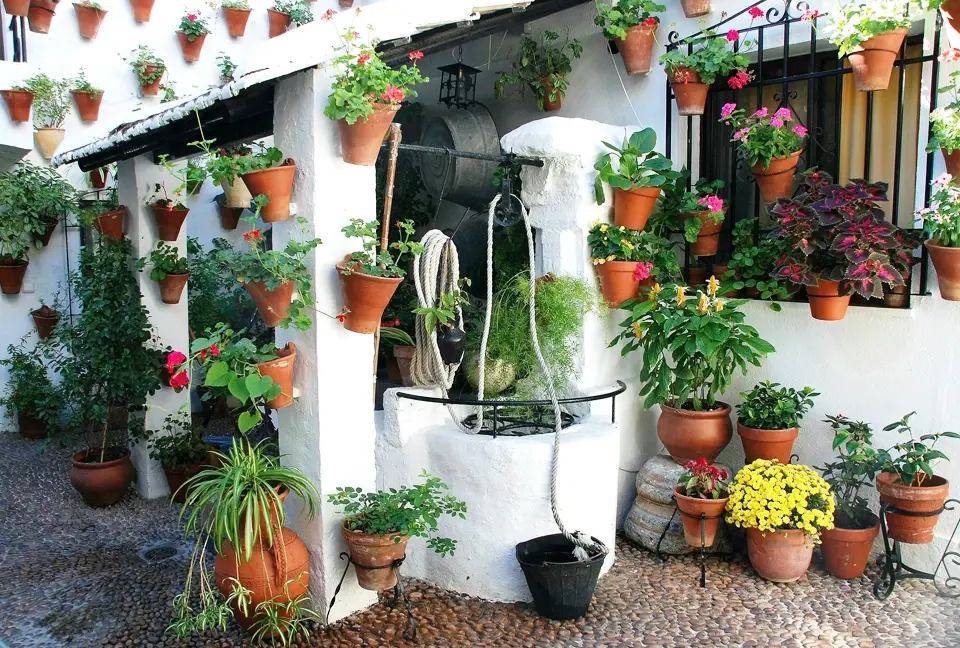
Malaga spreads its festivities across districts and municipalities such as Vélez-Málaga and Estepona, where roses, daisies, and rosemary are intertwined in floral creativity contests, accompanied by sevillanas and barbecues that celebrate spring with music and prizes for the best decorations.
On the other side of the map, Cadiz comes alive during the first weekend of May with a parade of crosses set up by neighbors and brotherhoods, which the mayor tours to the sound of musical groups. In Arcos de la Frontera, more than thirty crosses made of carnations, roses, and rosemary interact with popular theater and the kissing of the hands of the Virgin of the Snows.
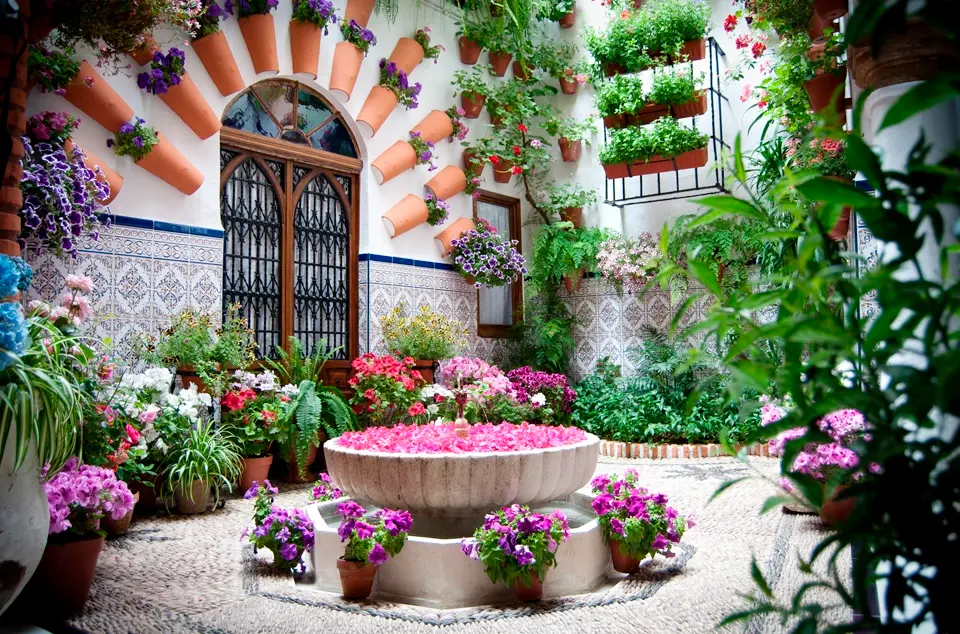
At the same time, in Huelva, the festivities take place from the last weekend in April until June: the Barrio Obrero, Santa Marta, and La Hispanidad neighborhoods kick things off, the Hermandad del Calvario closes in the Plaza del Perdón, and rituals of coplas and gamones recall their pagan origins.
During the first week of May, in Jaén, an interactive map guides travelers through more than twenty crosses and highlights the children’s joy in the processions on the 2nd, where children parade with their own floats and small musical bands. And in the city of Almería, brotherhoods, schools, and associations compete in a contest featuring fourteen candidates, made with natural flowers, shawls, ceramics, and copper, which will remain open from April 30 to May 10, inviting passersby to discover every corner of the city during two weekends of festivities before the Feria de La Mojonera.
Whatever your starting point, Carameltrail will design a tailor-made trip for you: private tours of crosses and courtyards, floral decoration workshops, Sevillanas classes under the Andalusian sky, and gastronomic experiences that pair Montilla-Moriles wines with rosemary stews and coastal skewers. We offer charming accommodation—from rural farmhouses to converted palaces—and cultural extras such as flamenco shows or visits to film shoots and exhibitions. Let our passion for Andalusia guide you and experience the Cruces de Mayo with the authenticity and warmth that only a tailor-made trip can offer.
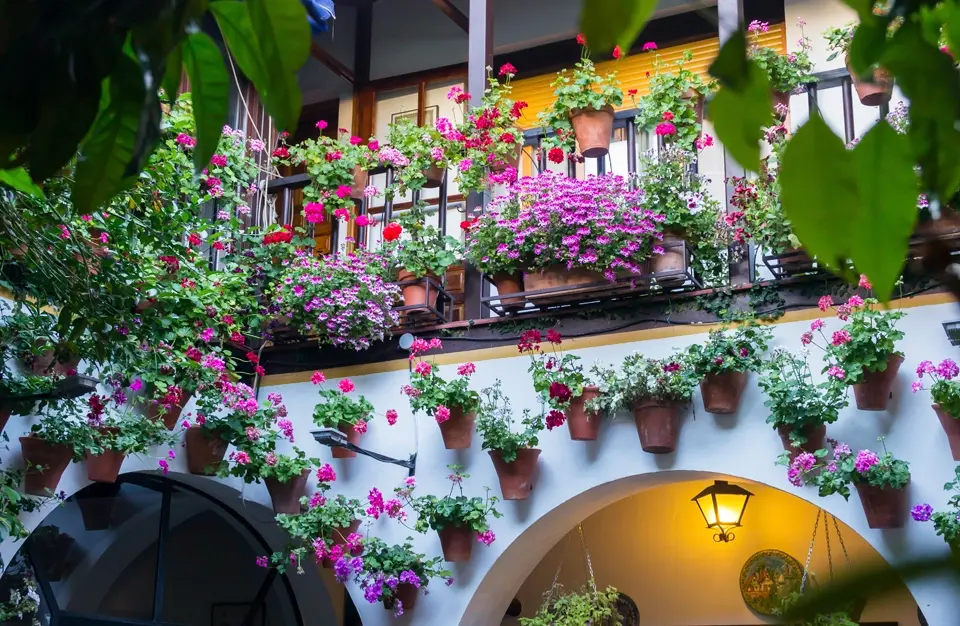
THE CROSS OF MAY REFLECTED IN ART
The Cross of May has inspired filmmakers, musicians, and writers, becoming a living symbol of springtime joy and popular faith in Andalusia. On the big screen, the film La Cruz de Mayo (1955), directed by Florián Rey and starring Gracia de Triana, immerses us in post-war Seville, where courtyards overflowing with carnations and nighttime processions become a scene of hope and renewal after years of hardship.
In contrast, the recent documentary Las bestias del romero (2023), by Manuel Correa, focuses its lens on Berrocal (Huelva) to show the ancient ritual of nailing the flag to the rosemary bush and the vibrant symbolic duel between rival brotherhoods, highlighting the community and almost epic component of the festival.
Literature, for its part, has offered rigorous essays such as La fiesta de las cruces de mayo en Andalucía (Antonio M. R. Ramos, 1998) and La cruz de mayo en Andalucía (José L. Gutiérrez Molina, 2001), which reconstruct the historical evolution of the festival, from its pagan roots to its consolidation as a manifestation of regional identity.
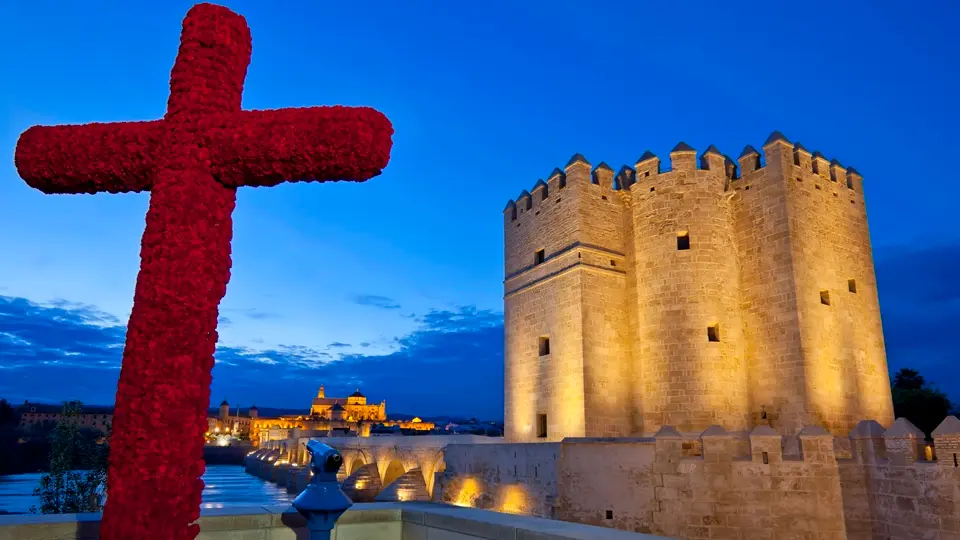
In the musical field, the pasodoble Imperio Argentina – La Cruz de Mayo and the sevillanas by Macarena de la Torre or the Music Band of the Red Cross of Sevilla have brought the vibrant festive rhythm to stages and records, infecting those who listen to them with the beating heart of the decorated courtyards.
The voice of Plácido Domingo, performing the copla “La cruz de mayo” (Salvador Valverde and Manuel Font de Anta) on his album Pasión española (2008), fuses operatic grandeur with Andalusian folklore, elevating tradition to universal resonance.
And for those looking for a popular anthem, the song “Mayo, mayo” by the Rondalla y Coral de la Peña de Añora, which became famous after being broadcast on Canal Sur in 1991, continues to thrill generations with its call to community celebration and the rebirth of the land.
Each of these artistic expressions, with its own language, reflects the passion, light, and color of a celebration that, year after year, is reborn in the corners of Andalusia and in the collective memory of those who experience it.
YOUR PARTNER FOR A TAILOR-MADE MAY CROSS EXPERIENCE
Don’t let May pass without feeling the heartbeat of Andalusia in your veins: book with Carameltrail and immerse yourself in an adventure designed just for you. Embark on a unique journey through the Andalusian The Cross of May, where every detail is designed for you to experience the festival like a true local, without worries and with the utmost professionalism.
We create provincial routes that pass through Seville, Cordoba, Granada, Malaga, and Almeria. With private transfers and expert guides in intangible heritage, you’ll feel the excitement of tradition in each province.
Choose your route—from magnificent Seville to sunny Almería—and turn tradition into your next great story. With Carameltrail, The Cross of May is no longer just a destination, but your own celebration. Start designing your tailor-made trip today and experience Andalusia like never before!
